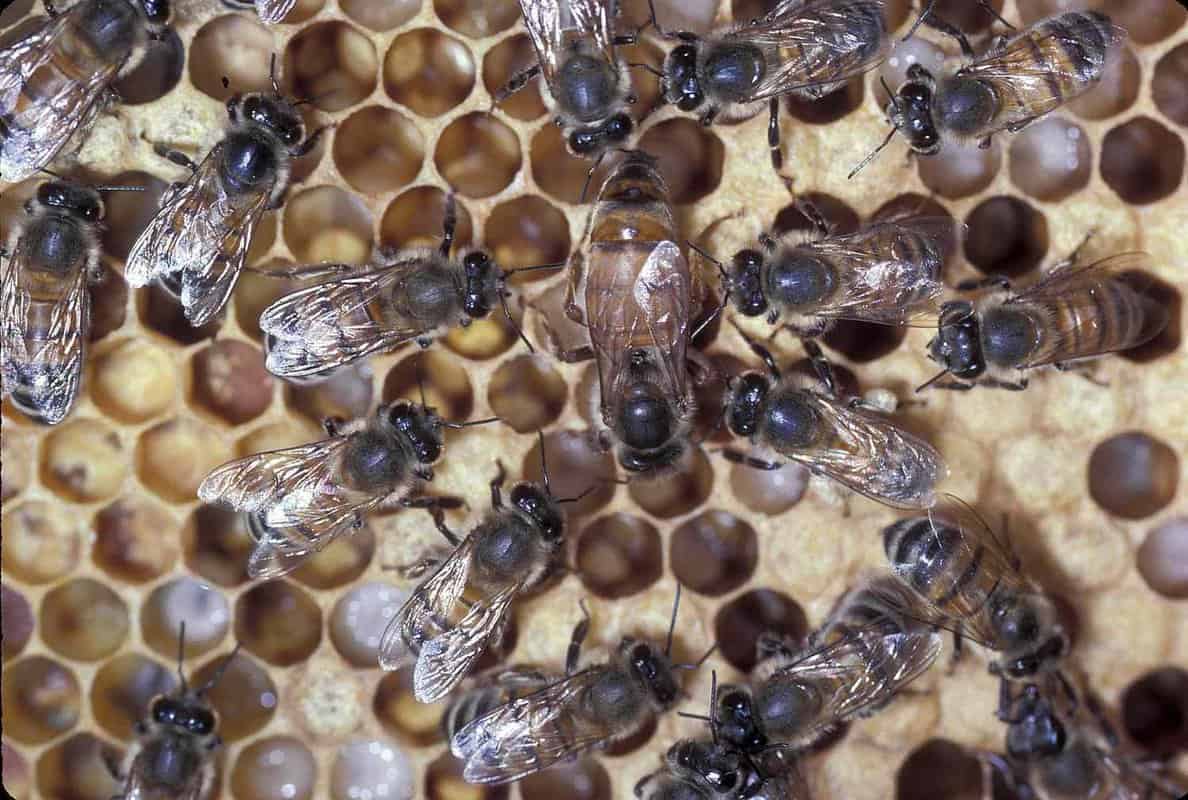Beekeeping is an ancient practice that has been used to produce honey and other products from the honeybee species. Queen, Drone, and Worker Bees are three distinct types of bees that are essential to the success of a beehive. In this article, we will explore the differences between these three types of bees and how they work together to create a successful and productive beehive. We will also discuss how beekeeping can benefit the environment and provide an introduction to the basics of beekeeping. By understanding the role of the queen, drone, and worker bees, you can unlock the mystery of beekeeping and gain a better understanding of how to manage and care for your honeybees.
Difference Between Queen, Drone, and Worker Bees
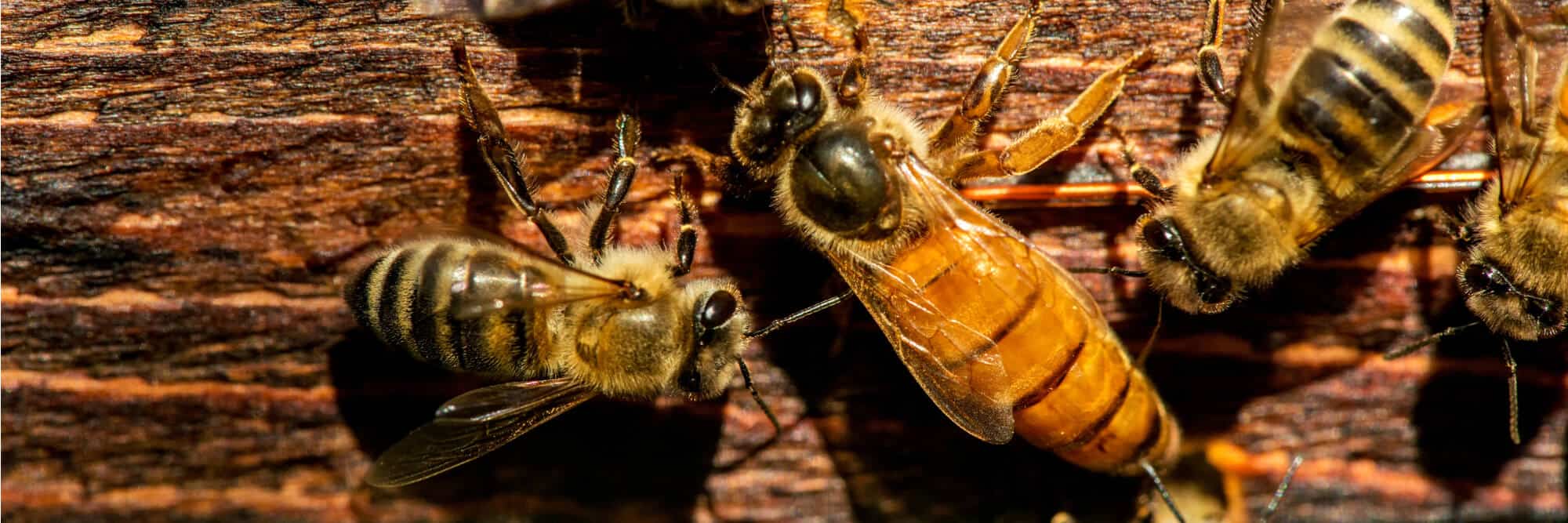
Queen Bee
The queen bee is the most important bee in the hive. She is the only bee capable of laying eggs, and she is the mother of all the other bees in the hive. The queen bee is the largest bee in the hive and is the only bee with a long, pointed abdomen. She is typically distinguished by a white dot on the top of her head.
Drone Bee
The drone bee is the male bee in the hive. Drones are larger than the worker bees, but they have no stinger and no means of producing honey. Their only purpose is to mate with the queen bee and produce more offspring to expand the hive.
Worker Bee
The worker bee is the most common bee in the hive. Worker bees are female and are responsible for the majority of the hive’s daily tasks. They are smaller than the queen and drone bees and have a barbed stinger and wax glands to produce honey. The worker bee is the only bee that can produce honey and is responsible for collecting nectar, pollinating flowers, and defending the hive from predators.
The key difference between drone and worker bees is that drones are male and do not have the ability to produce honey, while worker bees are female and are capable of producing honey.
Difference Between Drone and Worker Bee

Bees are an essential part of the ecosystem, and beekeeping is an interesting hobby. To understand beekeeping, one must first understand the three types of bees in a beehive: the queen, drones, and worker bees.
Queen Bee: The queen bee is the leader of the hive and is the only sexually mature female. Her purpose is to lay eggs and produce pheromones that keep the hive working together.
Drone Bee: The drone bee is the only male bee in the hive and its only purpose is to mate with a queen from another hive. Drones do not have stingers and do not gather food for the hive.
Worker Bee: Worker bees are female bees that are not sexually mature. They are responsible for the day-to-day operations of the hive, including gathering nectar and pollen, building and maintaining the hive, and protecting the queen.
The differences between drones and worker bees are vast. Here is a quick overview:
- Size: Drones are larger than worker bees.
- Role: Drones have one purpose: to mate with a queen from another hive. Worker bees are responsible for the day-to-day operations of the hive.
- Stingers: Drones do not have stingers, while worker bees do.
- Lifespan: Drones have a shorter lifespan than worker bees.
Understanding the different roles of queen, drone, and worker bees is essential for successful beekeeping. With practice and patience, beekeepers can become experts in caring for their hives.
Sex of Drone Bee
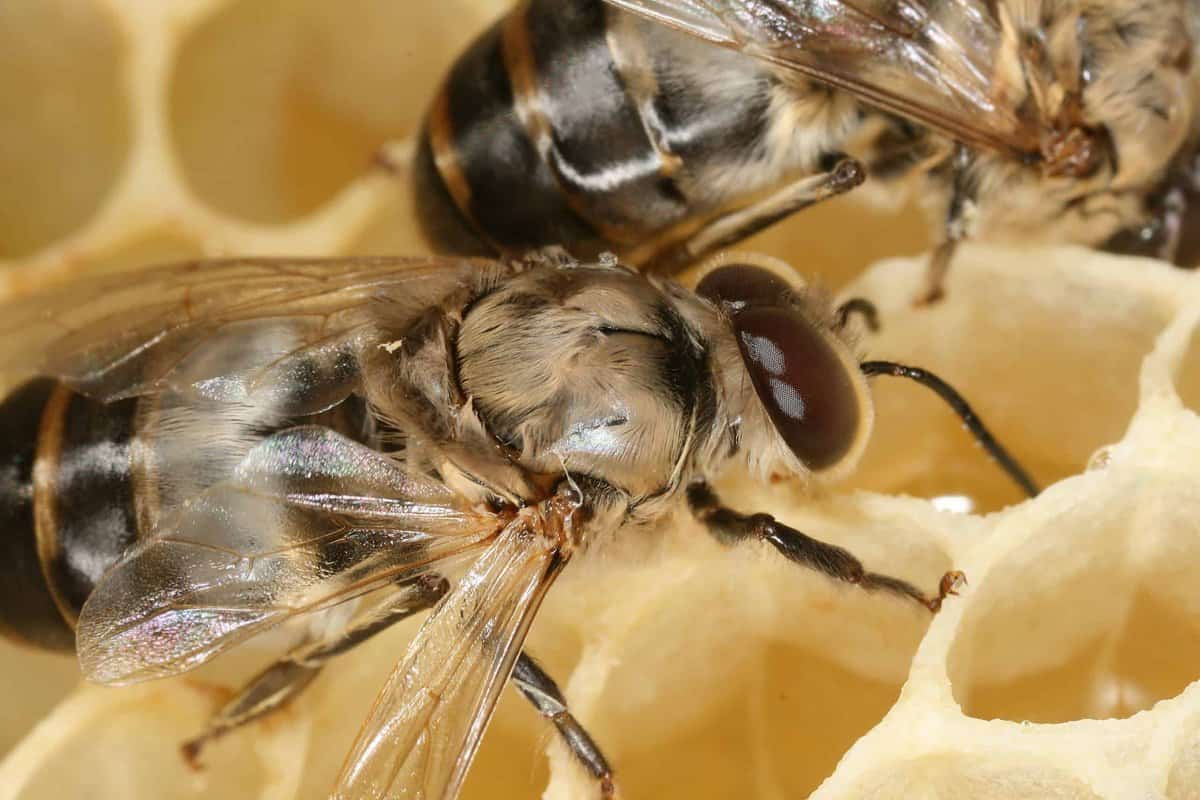
Drones are male bees. Drones are the only male bees in a bee colony. They are the result of unfertilized eggs, meaning they do not have a father. Drones are larger in size compared to worker bees and have a bigger abdomen. They also have larger eyes compared to the other bees in the colony.
Drones do not have stingers. Unlike worker bees and queen bees, drones do not have a stinger and therefore can’t sting. Therefore, they are considered to be the least threatening members of the colony.
Drones are produced by the queen. The queen bee is the only bee that produces drones. They are created through the queen’s unfertilized eggs.
Drones do not perform any labor. Unlike worker bees, drones do not perform any labor. They do not collect pollen, build honeycomb, or defend the hive. Their only purpose is to mate with a queen.
Drones can only mate in mid-air. Drone bees can only mate in mid-air with a queen bee. They must fly high in the air to find a queen and the mating process can take up to 10 minutes.
Drones are often expelled from the hive. When the colony needs to conserve resources, drones are often expelled from the hive. They are not allowed back into the hive and will eventually die if they are not able to mate with a queen.
Drone Bee vs Worker Bee
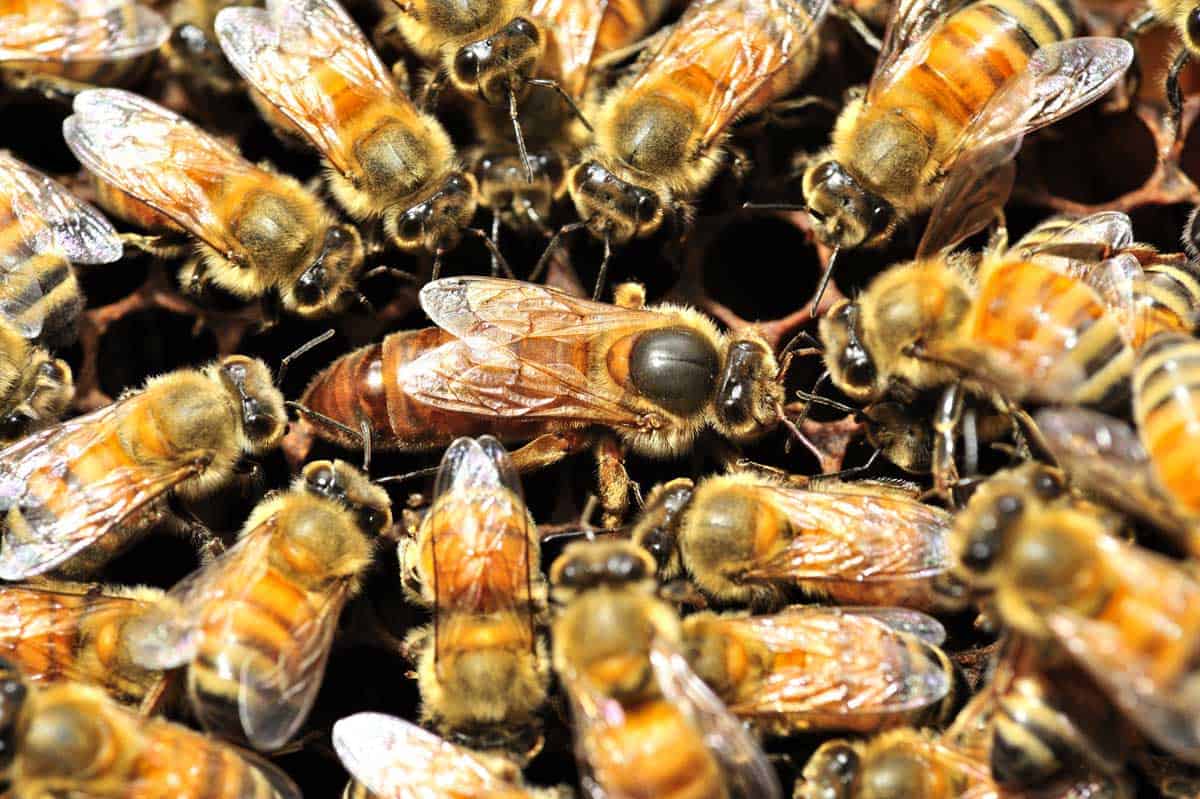
| Drone Bee | Worker Bee |
| Male | Female |
| Larger in size than worker bee | Smaller in size than drone bee |
| No sting | Has a sting |
| Lives for about 35 days | Lives for about 6 weeks |
| Mainly responsible for mating with the queen bee | Responsible for building the hive, collecting nectar and pollen, cleaning the hive, caring for the larvae, and protecting the hive |
Drone bees are male bees that are larger in size than worker bees. They are not able to sting and usually live for about 35 days. Their main responsibility is to mate with the queen bee. Worker bees, on the other hand, are female bees that are smaller in size than drone bees. They have a sting and usually live for about 6 weeks. Their main responsibilities are to build the hive, collect nectar and pollen, clean the hive, care for the larvae, and protect the hive.
Types of Bees in a Hive
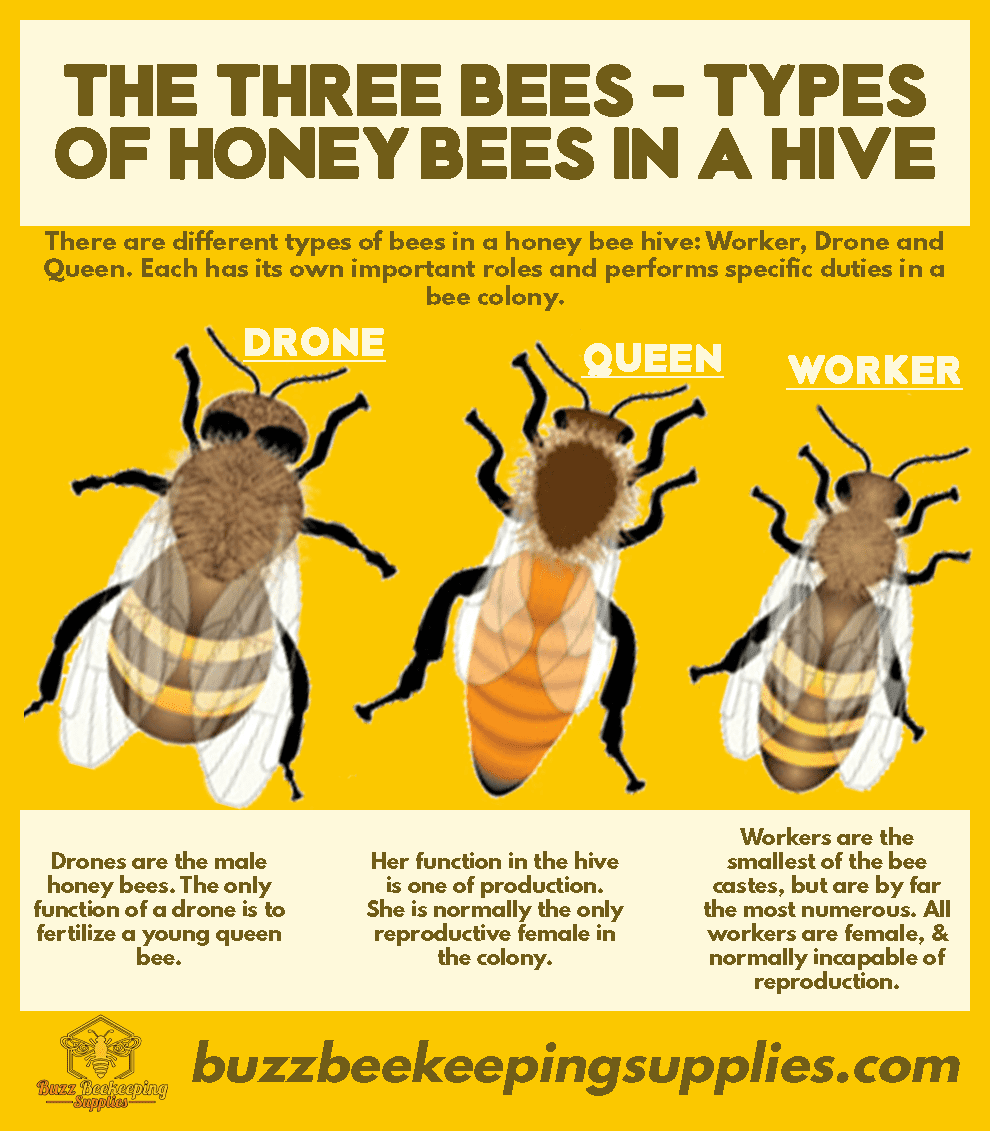
A honey bee hive is composed of three types of bees: queen, drone, and worker bees.
The queen bee is the largest bee in the hive and is easily identifiable by her large size and long abdomen. Her role is to lay eggs and produce chemical compounds which, when released, direct the behavior of all other bees in the hive.
Drone bees are the male bees in the hive and are easily identifiable by their large size and rounded abdomens. They have no stinger and their sole purpose is to mate with the queen.
Worker bees are the smallest bees in the hive and are easily identifiable by their small size and pointed abdomens. They have a stinger and are responsible for a variety of tasks such as cleaning, building, and collecting food from the environment. Worker bees also help to keep the hive warm by beating their wings to create heat.
In a healthy hive, the queen, drones, and worker bees work together to ensure a safe and successful environment for the rest of the colony.
Worker Bee Lifespan
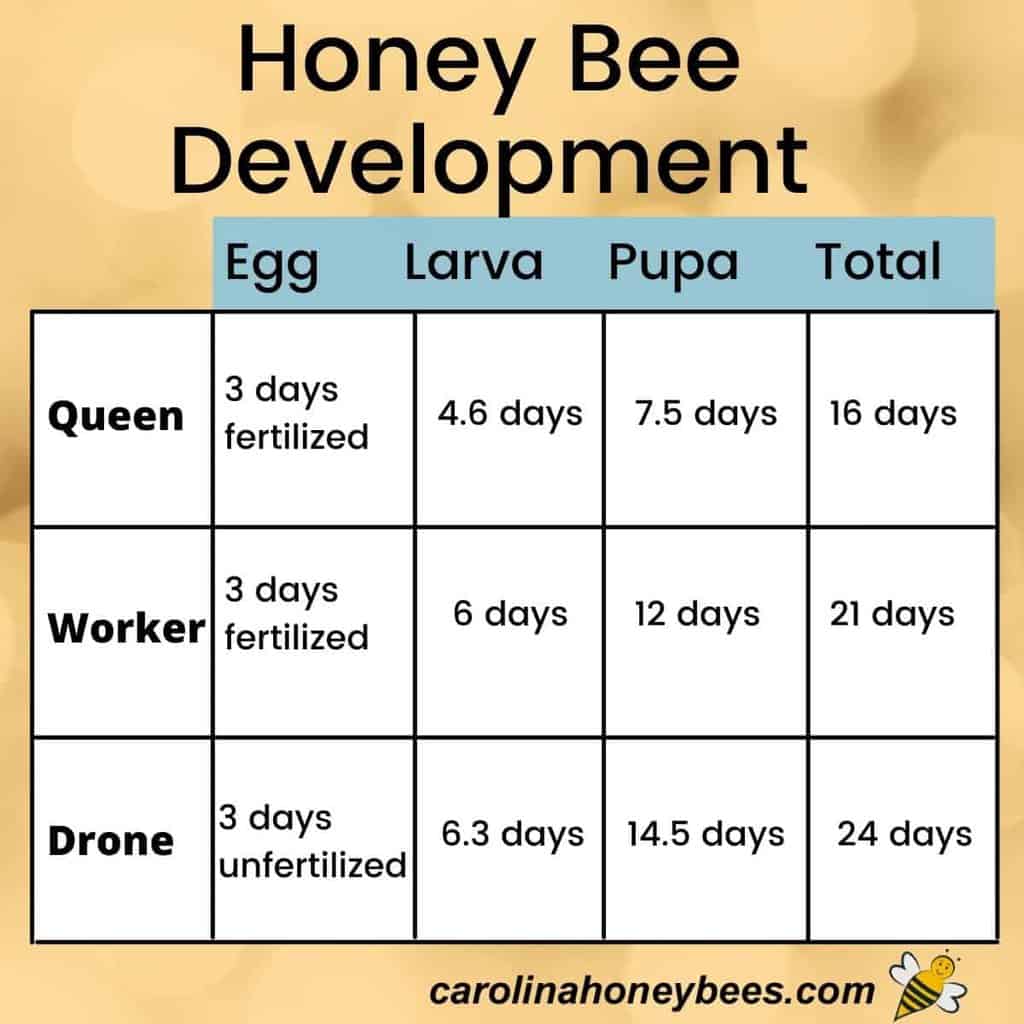
The lifespan of a worker bee is relatively short, ranging from 5 to 6 weeks in the summer and 5 to 7 months in the winter. During this time, the worker bee will be responsible for a variety of tasks such as foraging for food, constructing the hive, and protecting the colony from predators.
The worker bee will work tirelessly for the colony until it finally succumbs to exhaustion and dies. During its short life, a worker bee will produce just over one-half pound of honey and travel a total of up to 500 miles gathering nectar and pollen.
| Season | Lifespan |
|---|---|
| Summer | 5-6 weeks |
| Winter | 5-7 months |
The worker bee’s life is essential to the colony, as it is responsible for the majority of the work that needs to be done. Without the worker bee, the colony would be unable to survive.
Roles of Queen, Drone, and Worker Bees
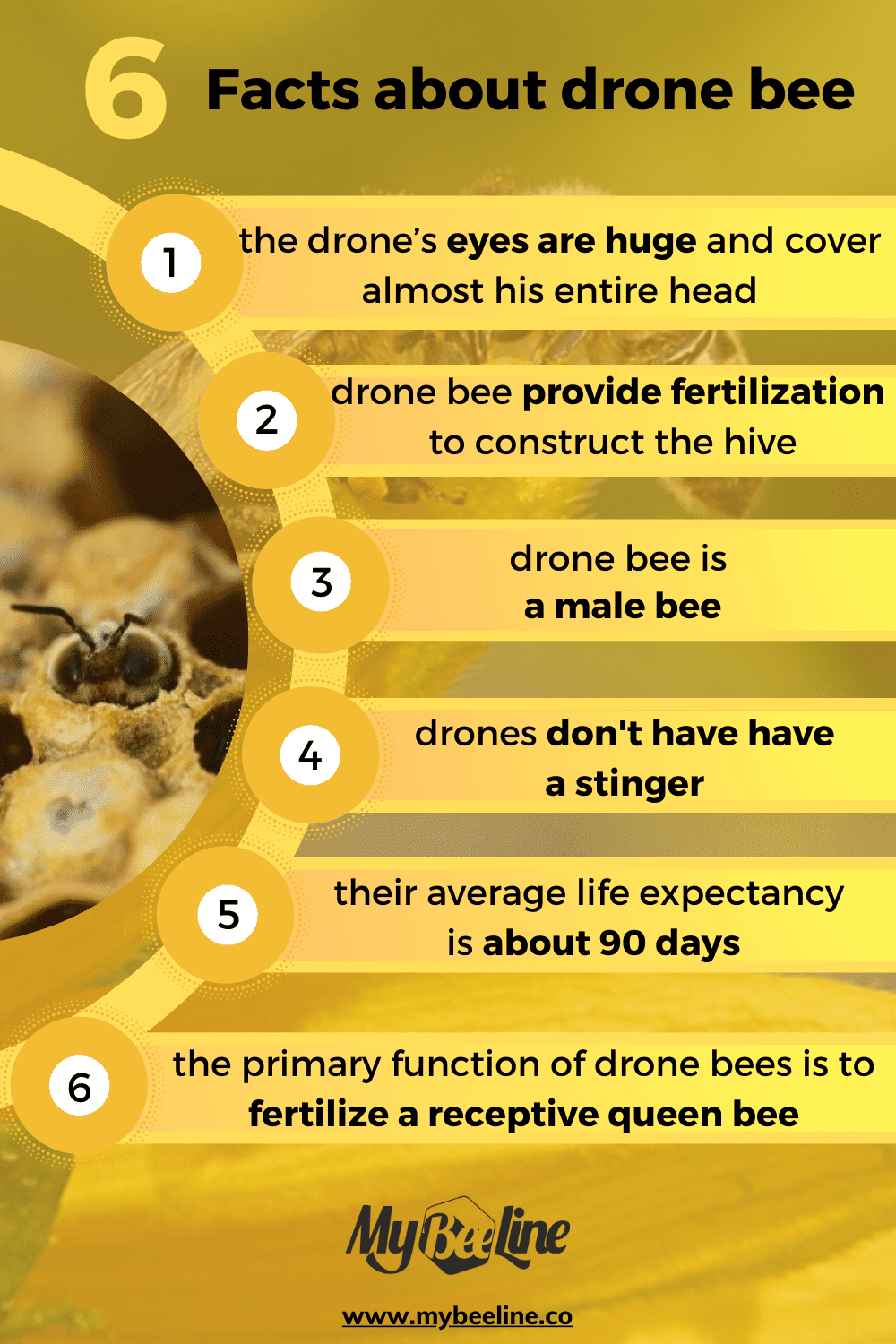
- Queen Bee: The queen bee is the most important bee in the hive. She is responsible for laying the eggs that will become the future of the colony. The queen bee also produces pheromones that help keep the hive in balance. The queen bee is the only bee that can lay fertilized eggs and produce new bees.
- Drone Bee: Drone bees are male bees and are responsible for mating with the queen bee. They do not work in the hive like the worker bees and are unable to produce honey or wax. Drone bees are essential for the survival of the colony.
- Worker Bee: Worker bees are female bees and are responsible for many of the tasks required to keep the hive functioning. They are responsible for collecting nectar and pollen, building wax comb, feeding the queen and larvae, and protecting the hive from predators. Worker bees also produce honey and bee’s wax.
How to Identify Queen, Drone, and Worker Bees
Queen bees are the largest bees in the hive and they have a distinct shape. They have a long, slim body and a large, round head. The queen’s abdomen is longer than the other bees and her wings are smaller.
Drone bees are the male bees in the hive. They are larger than worker bees and have rounder bodies with shorter abdomens. They have large eyes and no stingers.
Worker bees are the smallest bees in the hive and they have a distinct shape. They have a small, round body and a small, round head. Their abdomens are shorter than the queen and their wings are larger.
| Bee Type | Size | Abdomen | Wings | Eyes | Stinger |
|---|---|---|---|---|---|
| Queen | Largest | Long and slim | Smaller | Round head | Yes |
| Drone | Larger than workers | Shorter | No | Large | No |
| Worker | Smallest | Shorter than queen | Larger | Small round head | Yes |
The key difference between the queen and the drones is that the queen has a stinger, while the drones do not. In addition, the drones are larger than worker bees and have larger eyes. The queen bee is the only bee that can lay eggs, and the drones are the only male bees in the hive. Worker bees are the smallest bees in the hive and they perform most of the hive’s labor. They are the ones that build the honeycomb, collect nectar, and feed the young.
Frequently Asked Questions
What Types of Bees are Involved in Beekeeping?
Beekeeping requires three types of bees: queens, drones, and workers.
- Queen Bee – The queen bee is the only female in the hive and she is the mother of all the other bees in the hive. Her role is to lay eggs and keep the hive functioning.
- Drone Bee – Drone bees are male bees that do not have stingers and their role is to mate with the queen bee.
- Worker Bee – Worker bees are the most common type of bees in the hive and they do all the work. They build the comb, gather nectar and pollen, and feed the queen and drones.
Beekeeping requires knowledge and understanding of the roles of each bee type in order to maintain a healthy and productive hive.
What Equipment is Needed for Beekeeping?
Beekeeping requires some essential equipment to get started, including:
- Beehive – The beehive is the main structure where the bees will live. It’s typically made of wood, but there are other materials available as well. The beehive should include frames for the bees to build their honeycomb, an inner cover, and an outer cover.
- Smoker – The smoker is used to calm the bees when you work within the hive. When the smoker is lit, it releases smoke that masks the alarm pheromones the bees emit when they sense a threat.
- Protective Gear – Protective clothing and gear are essential to protect yourself from bee stings. The clothing should fit snugly and cover all exposed skin. You’ll also need a beekeeping veil, which covers your face and head.
- Hive Tool – The hive tool is used to pry open the hive frames and scrape away any excess wax or propolis (a sticky substance produced by bees).
- Feeder – A feeder is used to provide supplemental food for the bees if the colony is not collecting enough nectar and pollen from the environment.
- Queen Excluder – A queen excluder is a metal grid used to keep the queen bee confined to a certain area of the hive, ensuring that the honey supers are not filled with eggs and larvae.
These are the basic pieces of equipment needed to get started with beekeeping. You may need additional tools and supplies as your colony grows and your beekeeping skills improve.
What are the Benefits of Beekeeping?
- Pollination: Bees are instrumental in pollinating flowers, vegetables, and fruits, leading to higher yields and healthier plants. The pollen they pick up from one flower is then transferred to another flower, facilitating reproduction in plants.
- Honey Production: Beekeepers can harvest honey from their hives, which can be consumed or sold. The honey produced by bees is a natural sweetener and a healthier alternative to sugar.
- Wax Production: Bees also produce wax through glands in their abdomen. This wax can be used for many purposes, such as making candles and cosmetics.
- Education: Beekeeping can be a great way to learn about the biology and behavior of bees, as well as the process of pollination. It can also be a great way to educate children and adults about the importance of bees in the environment.
- Environmental Benefits: By engaging in beekeeping, you can help in sustaining the bee population, which is essential for the environment. Bees are an integral part of the ecosystem and are important for pollinating plants and flowers.
What Challenges Are Associated With Beekeeping?
Beekeeping can be a difficult endeavor and there are many challenges associated with it. These challenges include finding a suitable location, protecting the hive from predators, managing swarms, and controlling diseases. Additionally, beekeepers must also be familiar with bee biology and behavior in order to effectively manage their hives and maximize honey production. Finally, beekeepers must also be prepared to deal with the risks associated with bee stings and other potential hazards.
How can I find a local beekeeping club or mentor?
- Ask Local Farmers – If you know someone who is a farmer, ask them if they know of any local beekeeping clubs or mentors. They may know someone who is part of a club or is willing to mentor.
- Look Online – You can look online to see if there are any beekeeping clubs in your area. Websites like Meetup.com and Beekeeping Forums are great places to start looking.
- Check with Local Government – Your local government may have information about beekeeping clubs or mentors in your area. They may even have a list of people who are willing to mentor.
- Ask at a Beekeeping Supply Store – Many beekeeping supply stores have local club information or can put you in touch with a mentor.
- Network – Talk to your friends and family and ask if they know anyone who is involved in beekeeping. They may be able to connect you with a local mentor or club.
Conclusion
Beekeeping requires a good understanding of the various types of bees and their roles in the hive. Queen bees are essential for reproduction and the production of new bees. Drone bees are responsible for fertilizing the queen’s eggs, while worker bees are responsible for collecting food, building the hive, and caring for the young. Beekeepers must understand the importance of each bee’s role in order to successfully manage the hive and ensure its health and productivity.
